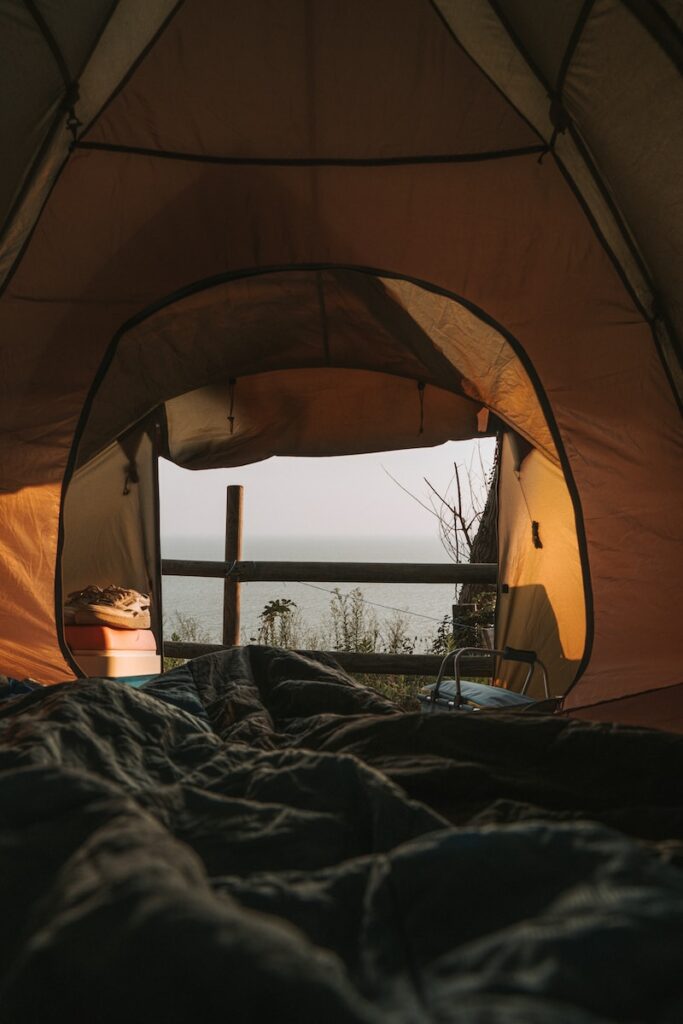Explanation of wearable sleeping bag are innovative outdoor gear that combines the functionality of a traditional sleeping bag with the mobility of clothing. They provide optimal warmth and comfort while allowing wearers to move freely.
Importance of choosing the right type based on temperature ranges Selecting the appropriate wearable sleeping bag is crucial for staying warm and comfortable during outdoor adventures. The right choice will depend on the temperature ranges you expect to encounter.
Introducing how to choose a sleeping bag This article will guide you through the process of choosing a wearable sleeping bag, considering factors such as temperature ratings, personal preferences, practical considerations, and research.
Understanding Temperature Ratings

Explanation of temperature ranges Temperature ratings indicate the range of temperatures in which a sleeping bag can keep you warm. Understanding these ratings is essential for choosing the right wearable sleeping bag.
Different rating systems (EN, ISO, etc.) Various rating systems, such as EN (European Norm) or ISO (International Organization for Standardization), provide standardized measurements for temperature ratings. Familiarize yourself with these systems to make informed decisions.
Factors affecting temperature ratings (shelter, metabolism, etc.) Temperature ratings are influenced by factors like the type of shelter, individual metabolism, clothing worn inside the sleeping bag, and use of sleeping pads. Consider these variables when selecting a wearable sleeping bag.
Types of Wearable Sleeping Bags
Lightweight Wearable Sleeping Bags for Warm Temperatures
- Materials and insulation options Lightweight wearable sleeping bags typically use synthetic insulation or down feathers and are made from lightweight materials like nylon or polyester. These bags are ideal for warm weather camping or backpacking.
- Features to look for (ventilation, zipper options, etc.) Look for wearable sleeping bags with features like ventilation zippers, adjustable hood and foot box, and draft tubes to regulate temperature and provide maximum comfort.
Mid-weight Wearable Sleeping Bags for Moderate Temperatures
- Materials and insulation options Mid-weight wearable sleeping bags strike a balance between warmth and weight. They often use down or synthetic insulation with moderate loft. Materials like ripstop nylon ensure durability.
- Features to look for (hood, draft collar, etc.) Consider mid-weight wearable sleeping bags with hoods, draft collars, and draft tubes to minimize heat loss and provide additional warmth during colder nights.
Heavyweight Wearable Sleeping Bags for Cold Temperatures
- Materials and insulation options Heavyweight wearable sleeping bags are designed for extreme cold conditions. They use high-quality down insulation, water-resistant shells, and durable fabrics to provide excellent warmth and protection.
- Features to look for (foot box, hood cinch, etc.) Look for heavyweight wearable sleeping bags with insulated foot boxes, contoured hoods with cinch cords, and draft collars to trap warmth effectively and prevent cold air from entering.
Matching Temperature Ranges with Personal Preferences

Sleeping bag comfort ratings vs. survival ratings Consider both comfort ratings (indicating the temperature range for optimal comfort) and survival ratings (indicating the temperature range for survival) when selecting a wearable sleeping bag.
Identifying personal comfort preferences (warm sleeper, cold sleeper) Know your personal preferences regarding sleep temperature. If you tend to sleep warm, you may opt for a wearable sleeping bag with a slightly lower temperature rating. Conversely, if you sleep cold, choose a bag with a slightly higher rating.
Considering potential weather changes during camping trips If you anticipate varying weather conditions during your camping trips, it may be wise to choose a wearable sleeping bag with a temperature rating slightly lower than the expected lowest temperatures. This ensures you stay warm even if the weather turns colder than anticipated.
Practical Considerations
Weight and packability Consider the weight and packability of the wearable sleeping bag, especially if you’ll be backpacking or traveling frequently. Opt for a lightweight and compressible option without compromising warmth and comfort.
Durability and longevity Choose a wearable sleeping bag made from durable materials that can withstand rugged outdoor conditions and provide long-term use. Reinforced stitching, water-resistant coatings, and durable zippers contribute to increased durability.
Cost and budget considerations Set a budget for your wearable sleeping bag purchase and consider the cost in relation to the features, durability, and brand reputation. Look for the best value within your budget range.
Wrap Up

Recap of the importance of choosing the right wearable sleeping bag Selecting the right wearable sleeping bag is essential for a comfortable and enjoyable outdoor experience. It ensures you stay warm and protected, allowing you to make the most of your adventures.
Final thoughts on finding the perfect match based on temperature ranges Consider your intended temperature range, personal preferences, practical considerations, and thorough research when choosing a wearable sleeping bag. With the right match, you can enjoy the warmth, comfort, and mobility offered by these innovative outdoor gear options.


